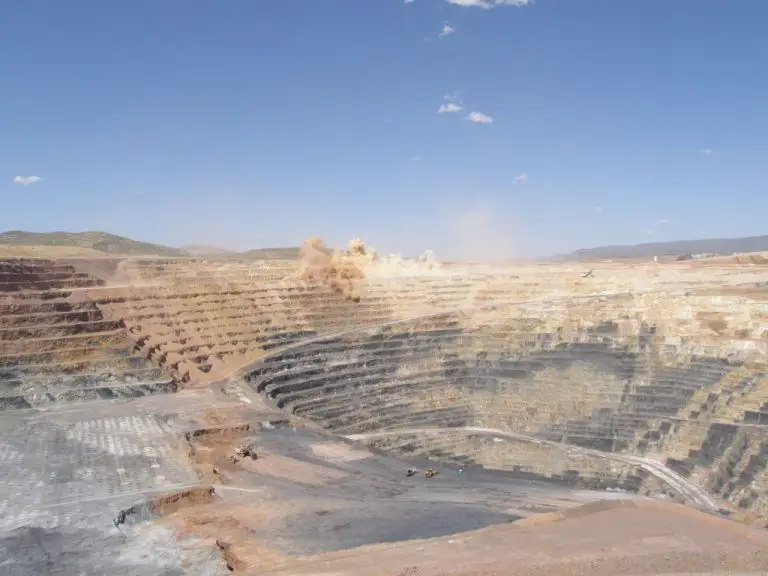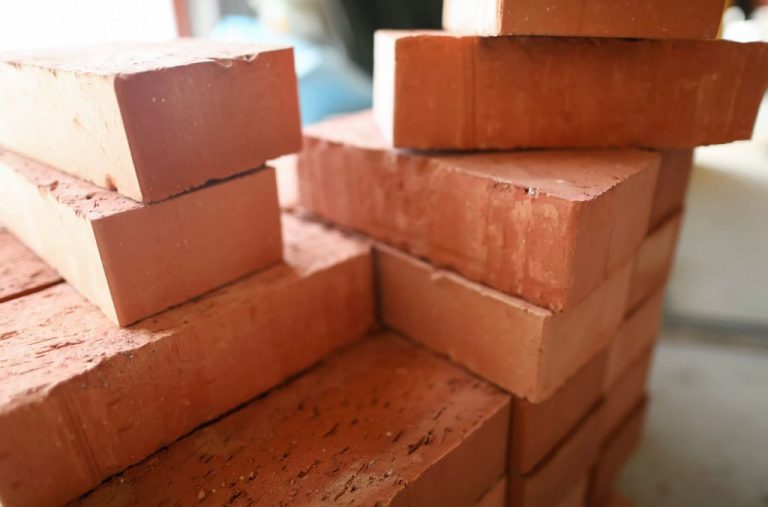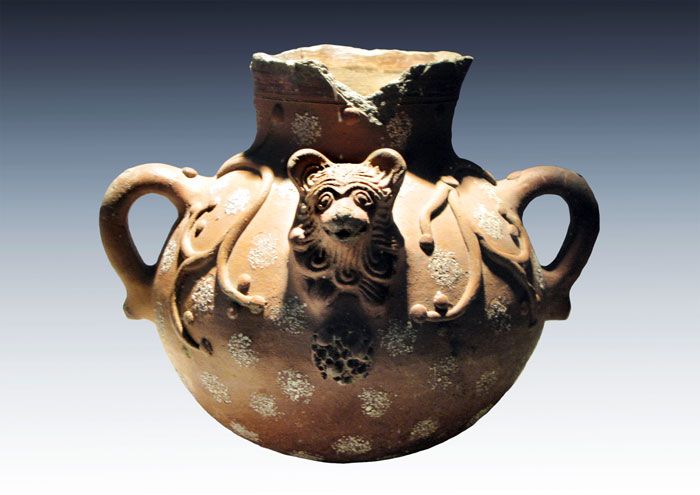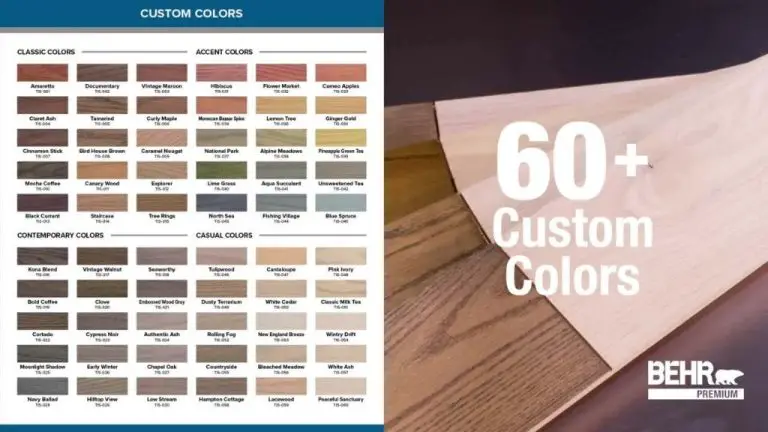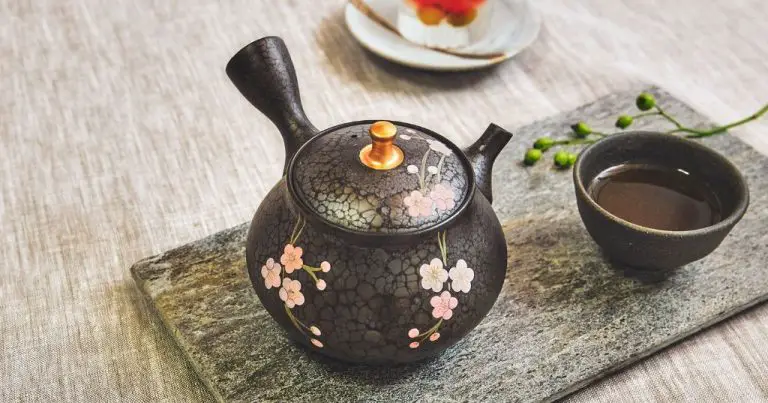Clay 101: Exploring Different Clays For Sculpting And Pottery
Clay is a type of fine-grained natural material that has been used for pottery, sculpture, and construction since prehistoric times (The Emergence of Pottery in West Asia). Clay develops plasticity when wet, which allows it to be molded into various shapes. When fired at high temperatures, the clay hardens into a ceramic material.
There are several major types of clays that have been used by artists and craftspeople throughout history, including earthenware, stoneware, porcelain, and modeling clay (Our Earth Our Cure: A Handbook of Natural Medicine for…). Each type of clay has unique properties that make it suitable for specific applications in pottery, sculpture, or other art forms. This overview explores the main categories of clay and their characteristics. Understanding the differences between clays allows artists to select the optimal material for their creative needs.
Properties of Clay
Clay is a finely-grained natural rock or soil material that combines one or more clay minerals with traces of metal oxides and organic matter. Clays develop plasticity when wet, due to a molecular film of water surrounding the clay particles, but become hard, brittle and non–plastic upon drying or firing.
The most important properties of clay are plasticity, permeability, shrinkage, strength, workability, and thermal properties. When wet, clay is flexible, moldable and can hold a shape. However, as it dries, the clay particles bond together tightly, causing the clay to harden and become brittle and unworkable.
When clay is fired in a kiln, pores and capillaries close and particles partially fuse. The higher the kiln temperature, the denser and less porous the clay becomes, increasing its strength and resistance to weathering. Porcelain clays can become fully vitrified with almost no porosity when fired at 1400°C. The color of fired clay also varies widely depending on composition and kiln atmosphere.
Some key properties of clay relating to pottery and sculpting include:
- Plasticity – Ability to be molded, sculpted and retain shape.
- Flexibility – Bends rather than cracks when worked.
- Workability – Ease of use for sculpting and throwing.
- Green Strength – Ability to retain shape before firing.
- Drying Shrinkage – The amount clay shrinks as water evaporates.
- Firing Shrinkage – Shrinkage during kiln firing as pores close.
- Vitrification – Extent of glassy phase formation during firing.
- Porosity – Presence of pores after firing, affects strength.
- Color – Fired color depends on composition and firing temperature.
Understanding the properties of different clays enables proper selection for intended uses in pottery, sculpture, construction and other applications.
Earthenware Clays
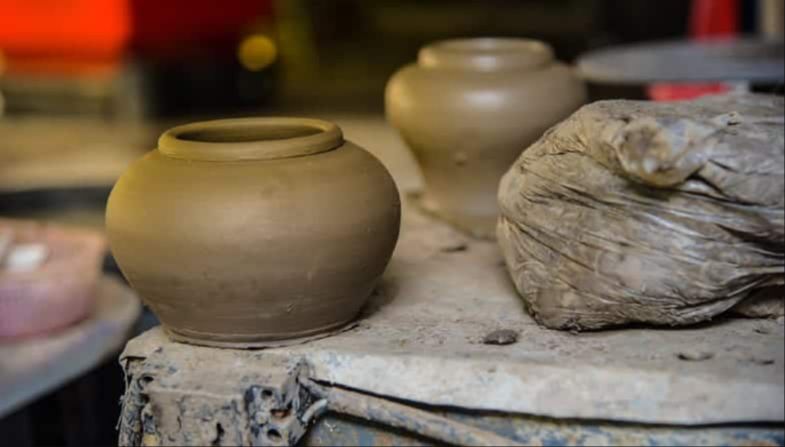
Earthenware clays are low-fire clays that mature at lower temperatures, typically around 1800°F – 2100°F (990°C – 1150°C) [1]. They have a coarse texture and are porous when fired. Earthenware clays are some of the most accessible and affordable clays for beginners to work with. They can be found in various natural colors like red, brown, and grey.
The porous nature of fired earthenware makes it suitable for making pottery objects like flower pots and decorative pieces. However, they are not ideal for functional ware since the porosity allows water to seep through. Earthenware clays are not very strong structurally. As a result, earthenware objects are more fragile and prone to chipping compared to high fire clays.
Common earthenware clays used in pottery include [2]:
- Terracotta
- Red clay
- Fire clay
Earthenware clays are great introductory clays for handbuilding and wheel throwing. Their softness makes them easy to wedge, shape, and form objects from. The low firing temperature allows for faster production and finishing of ware. It’s always a good idea to test various earthenware clays to find which has properties best suited for your specific clay projects.
[1] https://potterycrafters.com/what-is-potters-clay-made-of-pottery-clay-ingredients-explained/
[2] https://books.google.com/books?id=rRsMAAAAYAAJ&pg=PA350&lpg=PA350&dq=%22earthenware+clay+properties%22&source=bl&ots=vrz1uitua5&sig=ACfU3U2928jwW_mG60yNLGEkj4hVP-8WKQ&hl=en&sa=X&ved=2ahUKEwib2obpnomEAxXuOTQIHf7LBxIQ6AF6BAgJEAM
Stoneware Clays
Stoneware clays are fired to higher temperatures than earthenware, typically between 2,167°F (1,186°C) and 2,462°F (1,350°C). As cited from What Is Potters Clay Made Of, stoneware clays become vitrified at these high temperatures, resulting in a denser, less porous clay body.
The durability and low porosity of stoneware clay makes it ideal for functional pottery that will hold water. Pieces made with stoneware maintain their shape and structure very well. Stoneware also stands up to repeated use and cleaning better than earthenware due to its dense and non-porous properties after firing. Many ceramic artists prefer stoneware for creating pottery, dinnerware, and other items intended for practical use and everyday handling.
Some additional properties of stoneware clay, according to Stoneware Clay Properties, include good plasticity and workability for throwing on the potter’s wheel, as well as high green strength for handbuilding. The dense nature allows carved details and impressions to hold their crisp edges. Glazes also bond better to stoneware’s low absorption surface.
Porcelain Clays
Porcelain clays are fired at very high temperatures, typically between 2,200°F and 2,500°F. According to https://potterycrafters.com/what-is-potters-clay-made-of-pottery-clay-ingredients-explained/, porcelain clay is fired at temperatures up to 2,345°F (1,285°C) for the best results. The intense heat makes the clay non-porous and translucent. Because of its high firing temperature, porcelain clay can be difficult to work with. It is less plastic and sticky than other clays, but it can produce very smooth surfaces. The translucency allows light to pass through thin walled porcelain pieces, giving a luminous glow. Porcelain also has high strength and hardness, making it durable. It is popular for tableware, art ware, and technical ceramics that need to withstand repeated use.
Modeling Clays
Modeling clays, also known as plasticine or ceramic clay, are oil or wax-based clays that are reusable and do not require firing. They are commonly used for sculpting, modeling, animation, and more. The most popular types of modeling clays include:
- Oil-based clays – These clays use oils as their binder and plasticizer. Some common brands include Plastalina and Roma Plastalina.
- Wax-based clays – These use waxes as the binder. Popular brands are Claytoon and DAS.
- Polymer clays – These use PVC or other synthetic polymers. Brands like Sculpey and FIMO fall under this category.
Modeling clays come in a wide range of colors that can be blended and mixed. They are very malleable and easy to sculpt intricate details with. They also don’t dry out when exposed to air like water-based clays. This makes modeling clays ideal for sculpture, as pieces can be reworked many times before reaching the desired form.
Some limitations are that modeling clay sculptures are delicate and temporary – they cannot be fired in a kiln to harden. Finished sculptures must be supported by an armature or frame. Oils from skin contact can also degrade modeling clay over time. Despite this, their flexibility and clean, non-dusty nature makes modeling clays a popular choice for clay sculpting.
Source: https://www.alibaba.com/showroom/natural-modeling-clay.html
Clay Bodies
Clay bodies refer to the mixture of different clays and materials that make up a clay’s properties. Potters carefully choose clay bodies based on the needs of their projects. Some key properties to consider are plasticity, shrinkage, porosity, color, and firing temperature.
A stoneware clay body contains about 20-30% ball clay or kaolin for plasticity, with the remainder being stoneware clays that vitrify well at high temperatures. A popular recipe uses 20% kaolin, 20% ball clay, 20% fire clay, 20% silica, and 20% feldspar. This results in a versatile, strong stoneware clay. According to the Stoneware Clay Body Recipe from Ceramic Arts Network, adding a small amount of vinegar to the water helps increase plasticity when mixing the clay.1
Porcelain clays require about 50% kaolin for their white color and translucency. The remaining portion contains feldspar and silica for structural integrity when fired to higher temperatures. A simple porcelain recipe uses 25% ball clay, 25% kaolin, 25% feldspar, and 25% silica. The high kaolin content gives porcelain high plasticity for throwing and handbuilding.
Earthenware bodies contain more ball clay and fire clays, with smaller amounts of fluxes like feldspar or limestone. A recipe for a red earthenware uses 50% red art clay, 35% ball clay, 10% fire clay, and 5% feldspar. This results in a clay that fires to a rich red color at lower cone 04-02 temperatures.
For modeling clay, recipes add fillers like sand or grog to improve strength and minimize shrinkage. A modeling clay body may contain 25% ball clay, 25% kaolin, 25% fine grog, and 25% silica sand. This enables the clay to be used for sculpture and handbuilding at various temperatures.
1 https://ceramicartsnetwork.org/ceramic-recipes/recipe/Stoneware-Clay-Body-Recipe-153959
Sourcing Clay
When purchasing clay, you’ll want to consider a few key factors. First, think about the type of clay you need for your project. Stoneware and porcelain clays are best for functional pieces like mugs, while earthenware clays work well for sculptures. Modeling clays are great for beginners since they don’t require firing. The clay body is also important – some clays have grog or sand added to improve durability and texture.
There are many places to source high quality clay for your projects. Local ceramic supply stores will have a wide selection, and you can inspect and feel the clay before purchasing. Online stores like Temu also offer a range of clays at reasonable prices. For unique and specialty clays, look for small batch clays from artisan ceramic makers. And don’t forget about clay retailers on sites like Etsy and eBay.
When buying clay, opt for quality over quantity, especially when starting out. It’s better to purchase a smaller amount of premium clay rather than a bulk amount of low quality clay. With some testing and experience, you’ll discover which clay products work best for your artistic needs.
Working with Clay
The process of working with clay involves several key techniques including wedging, centering, firing, and glazing. Wedging is the process of cutting, folding, and pressing the clay to remove air bubbles and evenly distribute moisture. It creates a uniform clay body that is ready for throwing on the wheel or handbuilding. According to the McKinney Center, wedging prepares the clay for centering.
Centering is the process of shaping and condensing a ball of clay on the pottery wheel into a conical shape in preparation for throwing. It involves placing the clay on the wheelhead and applying even pressure while the wheel spins to center it. Centering helps achieve uniform wall thickness when throwing vessels on the wheel according to Jennifer Allen Ceramics.
Once clay pieces are shaped and dried to a leather-hard stage, they are ready for firing in a kiln. Firing bakes the clay permanently into a hardened state through exposure to high temperatures. Different firing temperatures are used depending on the type of clay. After bisque firing, pieces may be glazed and fired again at a lower temperature to melt the glaze and create a glossy surface.
Clay Projects
Some fun beginner clay projects to try include sculpture and pottery pieces. They are great for introducing basic techniques like pinching, coiling, and using slabs. According to Meghcallie on Pinterest, good beginner projects include pinch pot easels, coil initials, and textured slab boxes. Jmesaros2 suggests squiggle sculptures, carved surfaces, and clay letters as fun starter projects for kids. Focus on small sculptures, mugs, bowls, jewelry, and DIY crafts to learn clay handling without getting overwhelmed.
When making pottery pieces like mugs or bowls, work on centering clay on the wheel and pulling up walls evenly. Try decorating with carved patterns. For sculptures, build an armature if needed, then add slabs or coils of clay. Let imagination guide the shaping process. Add textures with carving tools or stamps. Simple glazing provides finishing effects. Always allow adequate drying time before firing clay projects in a kiln.


